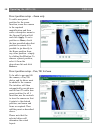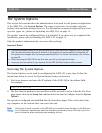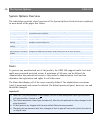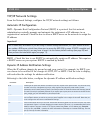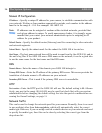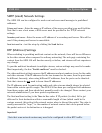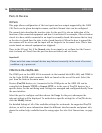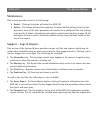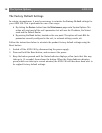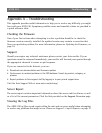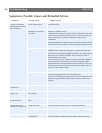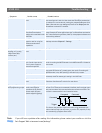
AXIS 230 The System Options
35
SMTP (email) Network Settings
The AXIS 230 can be configured to send event and error email messages to predefined
addresses.
Primary mail server - Enter the name or IP address of the server providing your mail facilities.
Note that to use a host name, a DNS server must be specified in the TCP/IP network
settings.
Secondary mail server - Enter the name or IP address of a secondary mail server. This will be
used if the primary mail server is unavailable.
Send test email to - test the setup by clicking the Send button.
RTP (Multicast) Settings
When switching to providing multicast content on the network, there will be no difference
in the video stream when compared to ordinary unicasting. The web page containing the
content from the AXIS 230 will function exactly as before, and viewers will not experience
any change.
To provide multicast broadcasts to multiple viewers, various settings may need to be made.
Most importantly, the box “Enable multicast” must be checked.
The other multicast settings concern the IP addresses and port numbers to use for the audio
and video streams. If the IP addresses for the two streams are the same, then the ports must
be different. Inversely, when using different IP addresses, then the ports can be identical.
Note that viewers do not
need to know these IP addresses.
The IP addresses used for muticasting audio and video streams should always be selected
from within certain specific ranges. The AXIS 230 has been pre-configured with addresses
from these ranges, and these should not normally need to be changed. Please contact your
network administrator if you have special requirements.
The final multicast setting is the Time to live value. If IP packets (i.e data) fail to get
delivered to their destination within a reasonable length of time (which could be for
various reasons), this setting tells network routers when to discard the packet. The value is
usually measured in "hops", i.e. the number of network routers that can be passed before
the packet arrives at its destination or is dropped.
Important!
Note that some network routers may need to be configured to allow RTP traffic.




